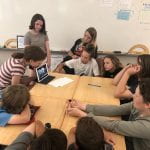Hello. This is my last grade 9 humanities post. And it’s about WW1. Let’s get it.
For the past month and a bit we’ve been studying WW1.
Learning about WW1:
Like a lot of people know, the event that really started the war was when a Serbian Extremist killed the Archduke of the Austri0-Hungarian Empire, Franz Fernidand. Many other things led up to the war but when the Archduke got killed, Austria-Hungary declared war on Serbia, Russia came to Serbia’s aid, Germany was allied to Austria-Hungary and so it became a tangled and complicated war that would spread out across the world.
For a better explanation check out the video below.
https://youtu.be/U7EFh0Jl1Gg
A few of the boys and I made a short video about what happened in WW1 if it were a bar fight. It isn’t super clear but it helped us understand the conflict a bit better.
We’ve also watched plenty of videos from the YouTube channel “The Great War”. My teacher really seems to like the guy in it Indie Nidel.
The project:
We each had to create a video about a certain aspect of the war through a Canadian Perspective.
Other people who chose to do a stop motion were Kyle, Taylor, and Sam.
My video:
https://youtu.be/SkTIuk_aoEg
I decided to make a stopmotion, partly because I’d never done one and it looks cool and also I thought it would be the best way to show the information and story I was trying to bring to light.
Screenplay:
My screenplay was essentially my script. And it was almost the first screenplay I’ve written by myself for this year.
It served mostly as my script because I only had voiceovers in my video.
Cove Cliff visit:
As part of the end of the project we went to Cove Cliff to show our videos to the Grade 6 and 7s. My little brother is that age so I was expecting them to Behave similarly to him. Since the start of the project we had to focus on making our videos for a younger age. I presented to three groups. The first group was 2 boys who were really engaged but I could tell they were losing interest when I gave them questions to answer. I then went to a group of 8 girls. Honestly I felt very intimated in front of them. And my last group was a group of boys who were really interested in all the videos in they watched. However I could tell they were starting to lose interest. So talking to them about what they like to do outside of school worked a lot better.
Reflection:
I really enjoyed learning how to make the stop motion, it was a lot easier than I thought. I’d been told it was very time-consuming but it wasn’t so bad. I’d say I already knew a fair bit about the war but this unit made us think about it differently and in more depth.
Well that about wraps it up for this year.
See ya.


















































